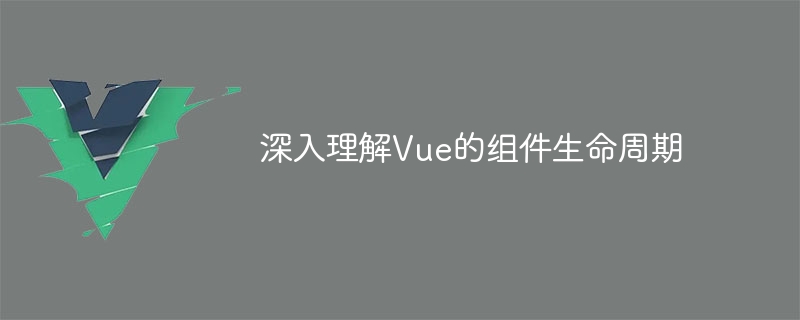

In-depth understanding of Vue’s component life cycle requires specific code examples
Introduction:
Vue.js is a progressive JavaScript framework that is simple and easy to learn. , efficient and flexible features and are favored by developers. In the component development of Vue, understanding the life cycle of components is an important part. This article will delve into the life cycle of Vue components and provide specific code examples to help readers better understand and apply them.
1. Life cycle diagram of Vue component
The life cycle of Vue component can be seen as the entire process from creation to destruction of the component. The figure below is a life cycle diagram of a Vue component, including hook functions at different stages. When a component is created, it will go through the "creation phase", "mounting phase", "update phase" and "destruction phase" in sequence.
(Insert life cycle icon)
2. Specific stages and hook functions of Vue component life cycle
Creation phase(Creation)
Mounting phase (Mounting)
Updating phase (Updating)
Destruction phase (Destruction)
3. Code example
组件生命周期示例
{{ message }}
The above code is a simple Vue component example. At different life cycle stages, we use console output to view the execution of the hook function. You can run the example through the following steps:
Use the above component in the parent component:
By running the example, we can clearly see the execution sequence of the component's life cycle hook functions in different stages, and then gain an in-depth understanding of the life cycle of the Vue component.
Conclusion:
The life cycle of Vue components is an important concept in Vue, which is very helpful for understanding the creation, destruction and update process of Vue components. Through the introduction and sample code of this article, readers can have a deeper understanding of the life cycle of Vue components and flexibly apply them in actual development.
The above is the detailed content of In-depth understanding of Vue's component life cycle. For more information, please follow other related articles on the PHP Chinese website!
 Flutter framework advantages and disadvantages
Flutter framework advantages and disadvantages Why is there no sound from the computer?
Why is there no sound from the computer? mom.exe initialization error
mom.exe initialization error How to create a bitmap index in mysql
How to create a bitmap index in mysql Yiooke wallet address
Yiooke wallet address How to use python for loop
How to use python for loop Eth currency price today's market price USD
Eth currency price today's market price USD How to solve the problem that mysql link reports 10060
How to solve the problem that mysql link reports 10060



